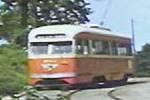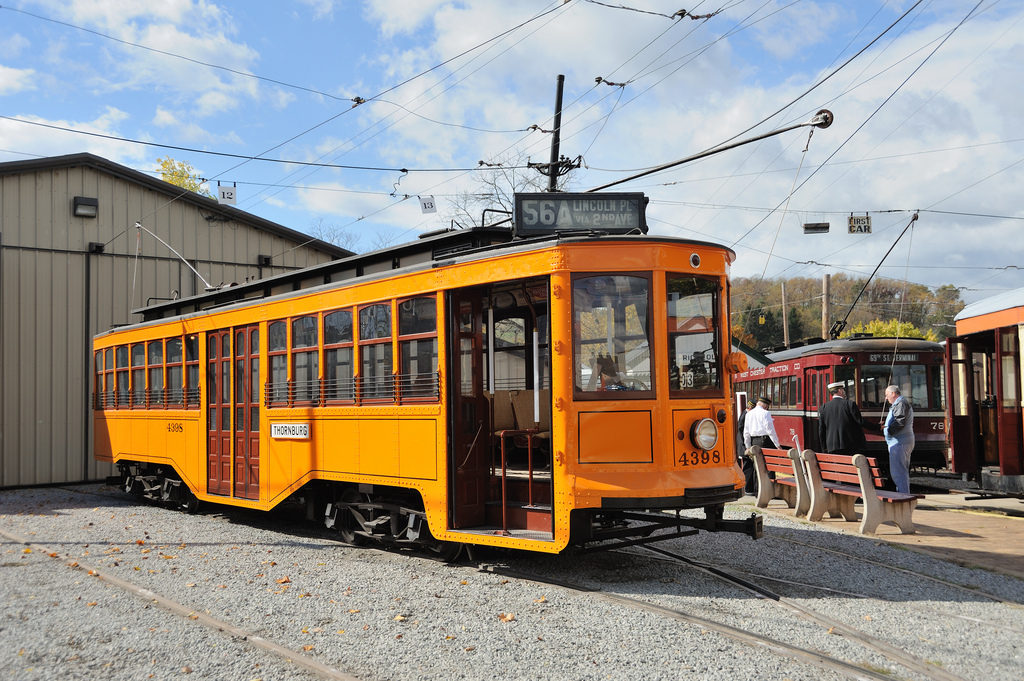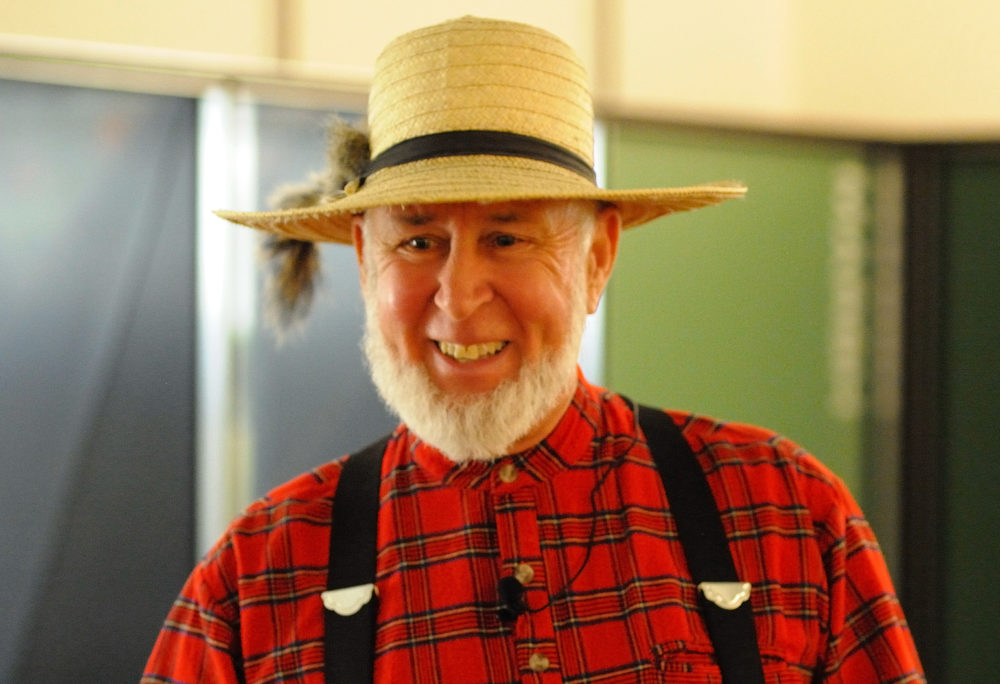
“Here comes the trolley, Mom!” How many times did I or my little brother say that as we waited for that sleek red and cream colored mini-train of the Pittsburgh Railway Company to pick us up and take us home? It was the 1950s, long ago if not so far away, before our family had a car of our own. I only knew of a few school chums whose families had cars. The trolley was a choice–the only choice besides walking–for most folks in our Federal Street neighborhood. Even after Mom and Dad did buy a car, a 1952 Chevy, Dad needed it to get to work. Dad only got one day off a week, Sunday, and after driving to town for church, Mom would usually want to visit Grandma or one of my Aunts. So the trolley car, the “street car,” was still the most frequent way we got around town the rest of the week.
The fare was fifteen cents, and for a nickel more you could buy a “transfer.” This was a paper ticket that would let you get on a second trolley car for a longer trip. Usually we took the trolley to “downtown” Pittsburgh, and then back home again to the northside, across the Allegheny River. We’d ride all the way around Perrysville Avenue before we got off so we could walk down, not up, that very very steep Federal Street hill to the Barracks where we lived.
Later when we moved to Crafton, we still took the trolley most places.The trolley ride to Crafton was fun–longer and more exciting because the tracks from the West End to the Heights went through the woods alongside the road on a private right of way instead of down the middle of the street. “Bet you can’t remember streetcars!” I enjoy asking my younger cousins, trying to make them feel guilty. I have several “favorite” trolley memories.
For little kids, one of the big disadvantages of getting around by trolleywas having to wait for one to come. Sometimes little kids can’t wait ! I can remember when I was about six. We had waited and waited. Bythe time the trolley came, and we were halfway up Federal Street, I just couldn’t wait any longer. Mom was embarrassed, I was a little less so, but stinky. I still remember walking home from the trolley stop in a very unpleasant condition.
Public Schools all over Pittsburgh had special days at the city’s two Amusement Parks–Kennywood Park and West View Park. Kennywood is still going strong, but West View Park is one of those things that isn’t there anymore, except in the memories of grown-up kids who rode on the”Dips” and the other rides. Crafton schools had their “school picnic” at West View, and ride tickets were sold in the Principal’s office at a discount. Then on picnic day, special trolley cars would pick up Moms and kids (guess Dads were working) at the corner of Noble and Steuben.The trolley would go downtown, then all the way to the Park without stopping.You didn’t have to change cars like you would on other days. Now that was exciting!
The trolley from Downtown to the amusement park was memorable for another reason. After passing Perry High School, the tracks left the street and went down a long hill through the woods, and then up the other side to a “trolley barn.” This was where street cars were kept at night, and except for school picnic days, you would have to switch trolleys here again before going on to West View. When the trolley started down that hill, the Motorman would really sit on the throttle and the car would seem to fly along, rocking from side to side. Moms didn’t seem to like this part of the ride nearly as much as we kids did. “Faster,faster!” we yelled with glee.
Getting to Grandma’s house in Homestead also required a couple of trolley changes. I remember the stop on Third Street in downtown Pittsburgh where we waited for the Homestead car. The store on the corner sold denim work pants–blue jeans–the precursor of Levi’s 501s. They always had two pairs of denim overalls in their window that must have had sixty inch waists. I always marveled at them, trying to imagine the person that could fit into those pants. Finally the car would come,and soon we would get off on Eighth Avenue, the main street of Homestead. We then had to wait for the “dinky” car that went up the hill to Munhall. This was an “old fashioned” double-ended car. It was painted orange,a leftover trolley from the Thirties. This car went back and forth,up and down the hill, on its own track, and so had a controller for the big electric motors that drove it at both ends. When the car reached the end of the line, the Motorman would disconnect the “trolley,” the long rod that connected the car to the electric line overhead and thus powered the motor. Then he would walk to the other end of the car, unhook the trolley rod that was tied down at that end, and let it spring up so the wheel on the end rode on the electric line. Now the car was ready to go back the way it had come. But the most fun was that while we were going up the hill to our stop at Fourteenth Street, Mom would let me sit in the other Motorman’s seat, the one at the back of the car.I could push the trolley throttle lever back and forth and play that I was the Motorman! What more could a kid want?

The photo above is of one of those double-ended ones like the one that went up the hill to Grandma’s house.
Up until about 1952, there was one of these shuttle “dinky” trolley cars in Crafton that ran right down Steuben Street in front of the Dairy Queen. This was the Thornburg Shuttle, another of those old two-ended orange cars. One end of the line was up Steuben at Noble Avenue, the other end was of course in Thornburg. This car crossed Chartiers Creek via the small bridge just upstream from the Thornburg Bridge that cars and trucks used. This line was gone by the time I moved to Crafton, but the tracks are probably still there, under several layers of Steuben Street asphalt.
“Ding, Ding, Ding went the trolley!” They really did have a bell. I believe it was in the early 90’s when the last trolley car made its final run from downtown Pittsburgh out to the South Hills. Hundreds of other routes had slowly been replaced by diesel-engined buses little by little over the preceding decades. The steel rails of the trolley-tracks have been paved over and occasionally peek out of the street when the asphalt wears thin. Just like the horse-drawn car, and the horse and wagon before that, the trolley car and the ding of the bell have taken their place in the receding memories of a dwindling number of rememberers.
